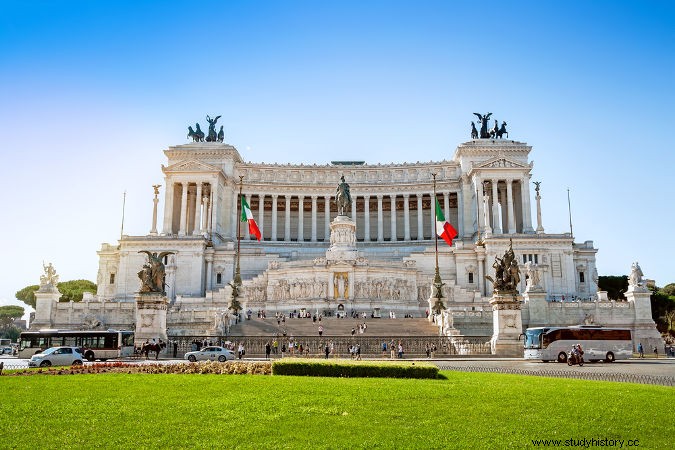
The unification Italian it was the process of territorial union that resulted in the emergence of the nation-state of Italy in the second half of the 19th century. This process was led by the Kingdom of Piedmont-Sardinia which, at that time, was ruled by King Victor Emanuel II , from the House of Savoy.
Italy in the 19th century
During the first half of the 19th century, Italy did not exist as a nation-state and its region consisted of a series of small kingdoms, many of which were under Austrian rule. . Nationalist ideals strengthened during the 19th century, especially from the liberal revolutions of 1848 that took place across Europe.
The strengthening of these nationalist ideals in the region of Italy led to the formation of different movements, which defended different ways of conducting this territorial unification:
- Neoguelfs :led by Vincenzo Gioberti, defended the unification of the region under the leadership of the papacy.
- Republicans :led by Giuseppe Mazzini, they defended unification under the inspiration of republican ideals.
- Monarchists :they wanted to unify the region under the leadership of the House of Savoy, constituting a monarchic regime. The great names of this group were Vitor Emanuel II and Conde de Cavour.
The movements of 1848 also encouraged republican-led rebellions in different parts of Italy. One of these attempts to seize power was led by Giuseppe Mazzini, leader of the republican group Young Italy . The republican movements, however, failed and ended up weakening.
The following year, in 1849, Victor Emmanuel II took over as king of Piedmont-Sardinia, after his father had failed to defeat the Austrians occupying kingdoms in the region. In 1852, Victor Emanuel II appointed Camillo Benso the Count from Cavour , as prime minister of the kingdom and together they led the Italian unification.
Unification of Italy
Italian unification, or Risorgimento (resurgence in Portuguese) as the Italians prefer, was led by the Kingdom of Piedmont-Sardinia. First, the prime minister carried out a brief modernization process in the kingdom. Regarding unification, the Count of Cavour knew that there must be a confrontation with Austria.
For this confrontation, he sought French support. Together, French and Sardinian-Piedmontese fought against the Austrians in the Second Italian War of Independence , in 1859. This war, won by the Sardinian-Piedmontese kingdom, allowed them to annex the Kingdom of Lombardy.
With the Austrian defeat, other Italian kingdoms rebelled, expelled their Austrian rulers and, after a plebiscite, also annexed to the Kingdom of Piedmont-Sardinia. The success in the confrontation against the Austrians assured King Victor Emanuel II the support of influential republicans such as Giuseppe Mazzini and Giuseppe Garibaldi.
This republican support for the Piedmont unification movement happened because of the weakening of the republicans after the failure of 1848. With that, Garibaldi led a rebellion in the Kingdom of the Two Sicilies, in the south of Italy, and, after conquering the region, handed it over to Piedmont.
As the conquered territories grew, Victor Emanuel II declared himself king of all Italy in 1861 . The following steps of this king also granted him control over the region of Veneto, which had allied with the Prussians during the Austro-Prussian War 1866. Finally, the withdrawal of French troops from the Papal States because of the Franco-Prussian War allowed the Italians to invade and conquer the city of Rome.
The invasion of the Papal States provoked the dissatisfaction of the Catholic Church, which did not recognize the authority of Victor Emanuel. This disagreement was only resolved in 1929, when the Lateran Treaty , signed between the Church and Benito Mussolini, made possible the emergence of the Vatican State. The last regions were annexed to Italian territory after the First World War, in 1919.
Take the opportunity to check out our video lesson on the subject:
